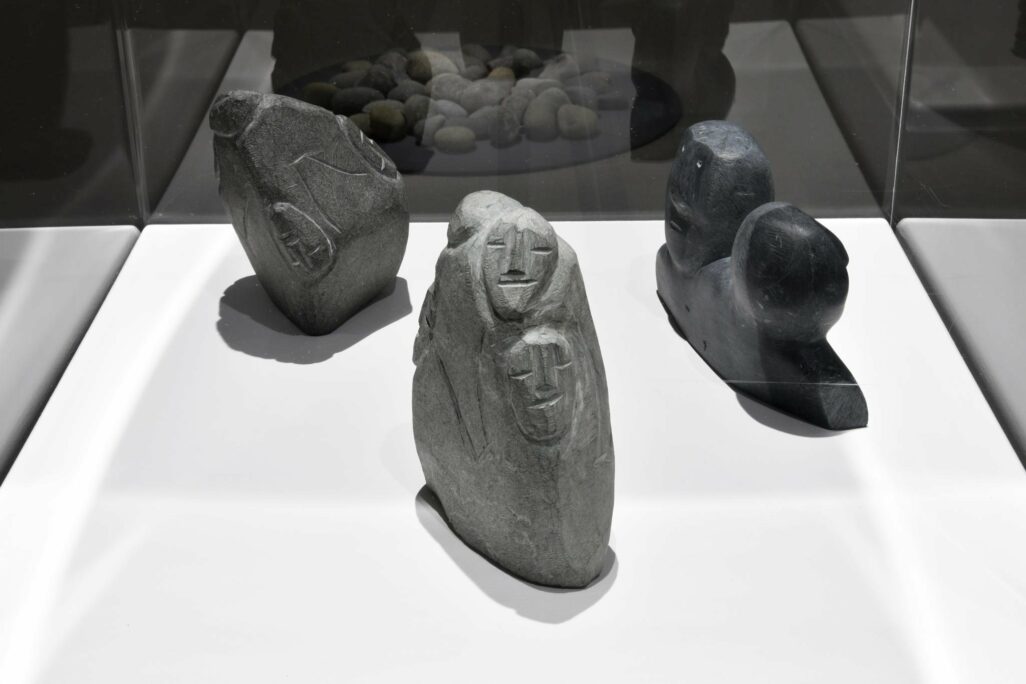Located on the western shore of Hudson Bay, in the Kivalliq region of Nunavut, Arviat is one of many Inuit communities that saw the development of an organized arts and crafts industry in the mid-twentieth century. This new industry was meant to provide an income for a formerly semi-nomadic population still adjusting from a deluge of assimilationist policies introduced by the Canadian government, aimed at forcing a swift transition to life in permanent settlements.
The work of John Pangnark (1920–1980), Eva Talooki Aliktiluk (1927–1994), Mark Alikaswa (1928–2008), Lucy Tasseor (1934–2012), Mary Ayaq Anowtalik (b. 1938), and George Arluk (b.1949) featured in Community Watch represents several generations of Arviatmiut artists who developed a style of sculptural abstraction that the community is now well known for. This abstraction is both inspired by and quite literally shaped by the land itself. The dark stone indigenous to the Kivalliq region is notably hard and coarse and consequently resistant to fine detailing and polishing. The medium’s limitations gave rise to a compact, minimalist style of sculpture whereby the composition is dictated by the shape of the stone itself, form and line take precedence over detail, and both the natural texture of the stone and the artist’s file marks are left visible on the surface. Perhaps due to this, Arviat stone sculpture is non-narrative and focuses on the human form almost exclusively. It has been suggested that the stripped-back quality of Arviat sculpture reflects the harsh personal experiences of the artists, many of whom were Ahiarmiut Inuit and survivors of a series of brutal forced relocations from the area of Ennadai Lake in the 1950s. While this explanation is certainly an over-romanticization, these labour-intensive sculptures—often depicting clusters of faces emerging from a single form—speak to resilience in the face of economic hardship and to a strong sense of community.

